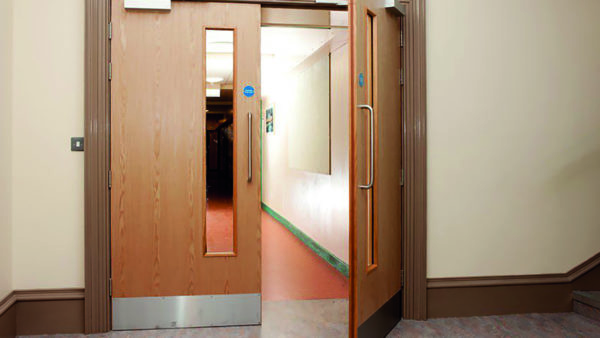
To anyone working in the architectural ironmongery industry, Graham Shirville needs no introduction. Joint managing director of Allgood for more than
20 years, a firm started by his father, his AI career began as a 13-year old wine waiter at the GAI committee meetings which were then held at his family home.
Graham has been an active GAI committee member for decades, instrumental in the education programme as well as setting technical standards. Most recently he represented the GAI on the CPA’s Marketing Integrity Group (MIG) working party developing the Code for Construction Product Information.
“The GAI was created to educate and train. It was a radical idea at the time,” says Graham. “We wanted to raise expertise so that customers, architects and specifiers had proper advice. The business model is largely still the same.”
The GAI held week-long residential training courses for each year of
the three-year DipGAI programme, which Graham remembers fondly. “They were a great craic, with deep technical discussions going on long into the night.”
The GAI was also producing training videos to allow for a wider reach. This was leading edge technology at the time. “We wanted to train all staff, to get everyone qualified and start their training early,” says Graham. “The curriculum has changed of course but our raison d’être is the same.”
Standard bearer
Graham and the GAI became a force to be reckoned with in the 1960s when there were very few standards for AI products. “The only quality test was for hinges which required a minimum weight per dozen pairs. The single EU market led CEN to start work on harmonised standards. None of the European countries wanted hardware so we headed that committee.”
Graham believes that, without the GAI influence, the standards would have been written to the lowest common denominator. “We wanted, and still want, higher standards for safety and performance and lifecycle. Ironmongery is one of the few moving parts in a building so durability and performance are important factors, so we spend a long time developing standards to enable that.”
Seeking closure
However Graham would love to see the standard for CE and UKCA marked door closers raised still further. He says it has never been updated and is based on performances achieved more than 50 years ago. The Grenfell Tower tragedy exposed its weakness. “The difference between the opening force of and closing force means the efficiency can be as low as 50% or 60% yet such devices can still pass the standard. In normal use it means the doors can be hard to open. At Grenfell they replaced all the flat doors. They were supplied as CE-marked fire doorsets but residents were not strong enough to open them so, it is reported that, in some cases, the landlord ‘fixed it’ by removing the door closers so they were no longer self-closing.
“I am livid that we haven’t been able to get the minimum efficiency number changed for 20 years. It has already been mentioned at the Inquiry and we have no answers. We can make better, safer products but there is presently no legal requirement to do it and, as they can be more expensive, they are seldom specified”
But Graham knows that architectural ironmongers and manufacturers have the required integrity. “We have to get everyone aware of their responsibility. The original specification has to be done by competent people who understand all the requirements – fire safety, security, longevity, acoustics, aesthetics. The skill is to combine that with an agreed budget and to consider performance over a building’s lifetime.
“We should be better – especially post Grenfell – at selling certified products; there is a huge opportunity. But I believe our industry is more professional than almost all other construction material suppliers – there is no other trade body that does as much to train its members as the GAI.








